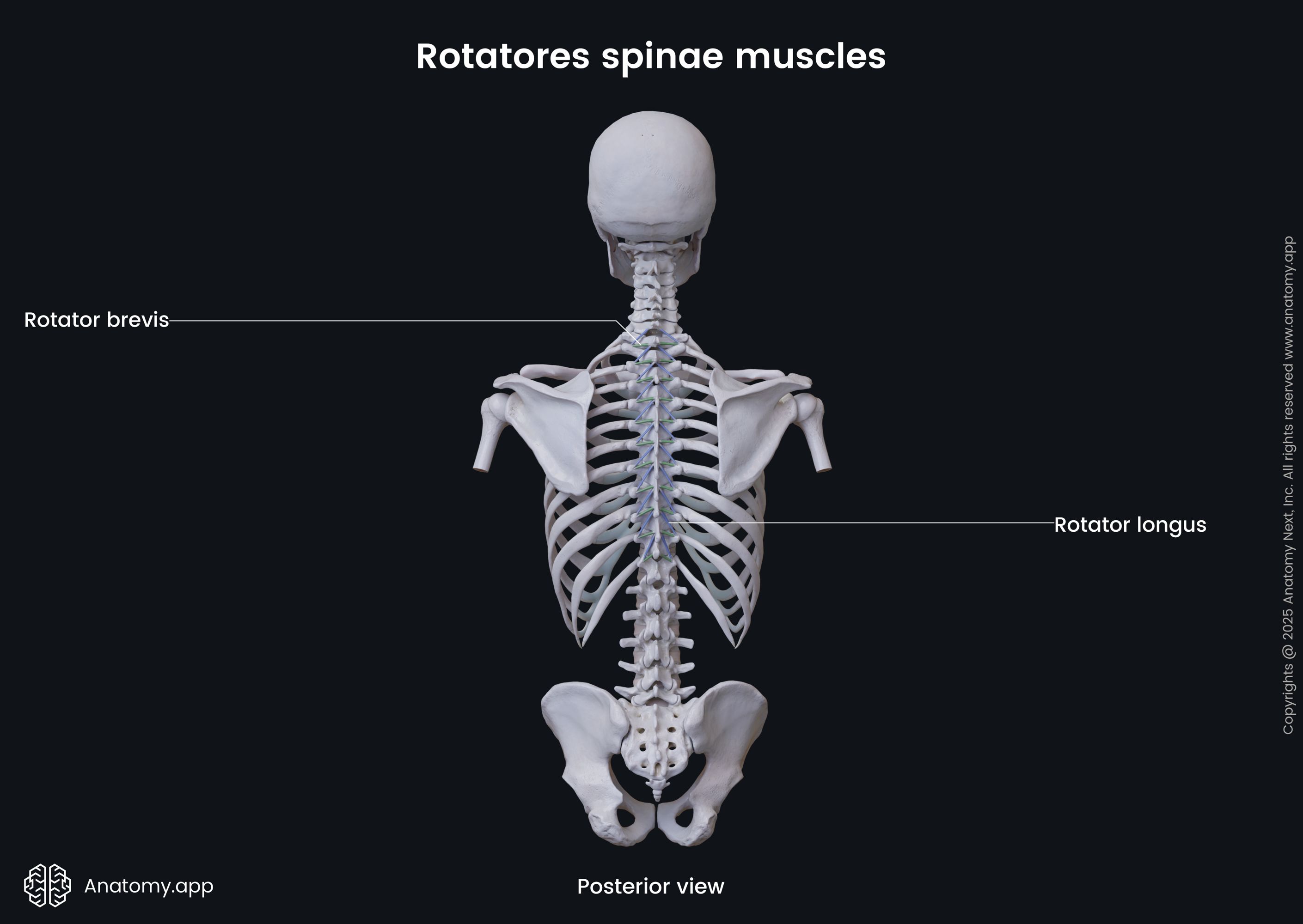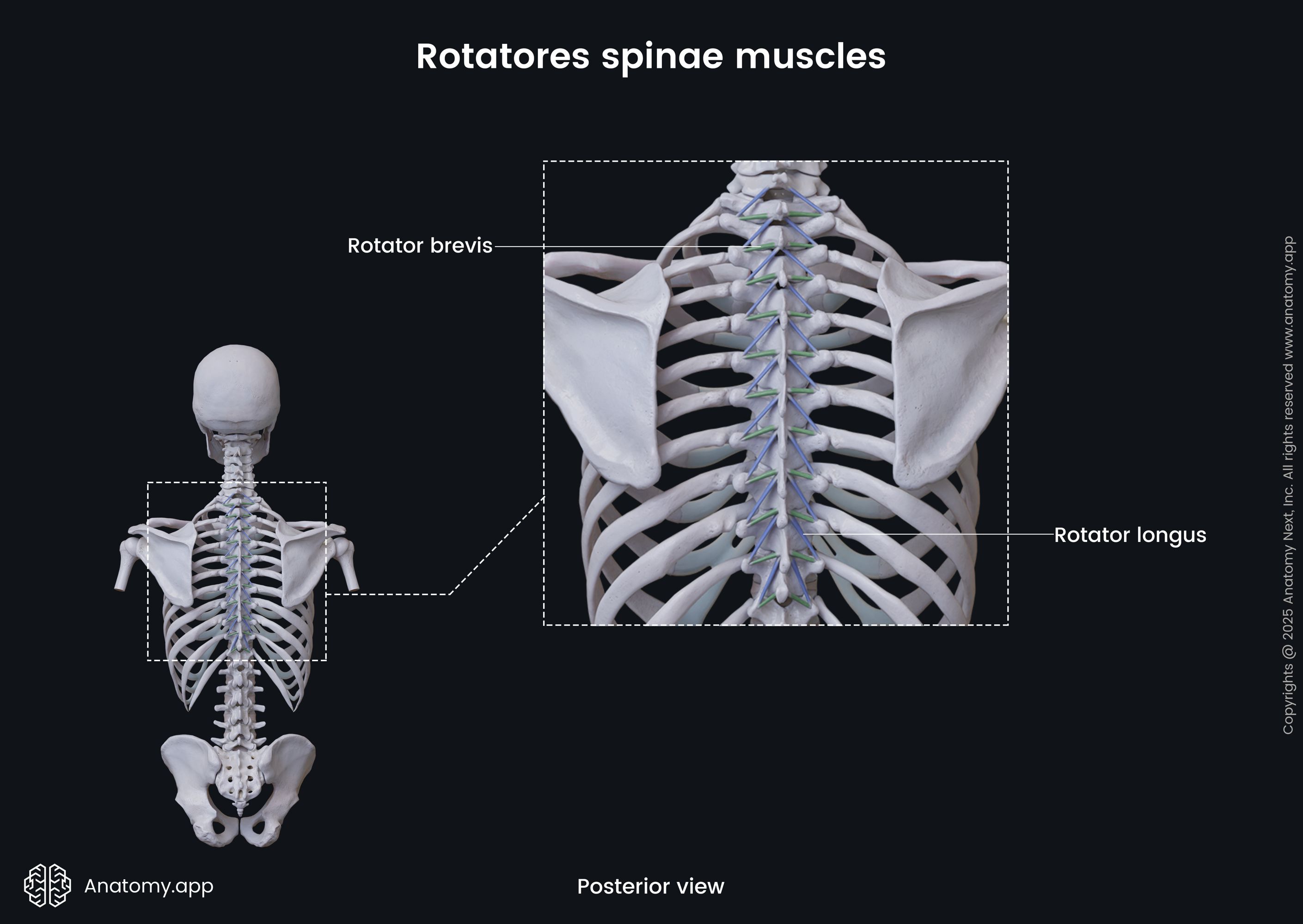- Anatomical terminology
- Skeletal system
- Joints
- Muscles
- Head muscles
- Neck muscles
- Muscles of upper limb
- Thoracic muscles
- Muscles of back
- Superficial back muscles
- Intermediate back muscles
- Deep back muscles
- Superficial layer
- Intermediate layer (Erector Spinae)
- Deep layer (Transversospinales)
- Deepest layer
- Muscles of lower limb
- Heart
- Blood vessels
- Lymphatic system
- Nervous system
- Respiratory system
- Digestive system
- Urinary system
- Female reproductive system
- Male reproductive system
- Endocrine glands
- Eye
- Ear
Rotatores
The rotatores (Latin: musculi rotatores) are a group of deep back muscles located laterally along the spine. Together with the multifidus and semispinalis muscles, the rotatores belong to the transversospinal muscles, and they are located in the deep layer of the deep back muscles. Each muscle extends between the transverse and spinous processes of the vertebrae. As the name suggests, the rotatores provide rotation of the spine, and besides that, they also stabilize and extend the spine.

These muscles are present in all regions of the spine. They are known as rotatores cervicis in the neck, rotatores thoracis in the thorax and rotatores lumborum in the lumbar region. However, the thoracic rotatores are the most developed, and other rotatores are sometimes absent. Overall, each human has eleven pairs of rotatores thoracis. They can be subdivided into long rotatores (rotatores longi) and short rotatores (rotatores breves) based on the length of their muscle fibers.

| Rotatores (thoracis) | |
|---|---|
| Origin | Transverse processes of thoracic vertebrae |
| Insertion | Rotatores breves - laminae and spinous processes of thoracic vertebrae 1 level above origin Rotatores longi - laminae and spinous processes of thoracic vertebrae 2 levels above origin |
| Action | Bilateral contractions - extension of thoracic spine Unilateral contractions - contralateral rotation of thoracic spine Stabilization of thoracic spine |
| Innervation | Medial branches of dorsal rami of spinal nerves |
| Blood supply | Dorsal branches of posterior intercostal and lumbar arteries |
Origin
The rotatores thoracis muscles originate from the transverse processes of the thoracic vertebrae.
Insertion
The muscle fibers of the rotatores insert into the junctions of the spinous processes and laminae, extending to the spinous processes of the vertebrae. The short rotatores attach to the vertebrae one level above their origin, while the long rotatores insert two levels above.
Action
Muscle contractions on both sides (bilateral contractions) extend the thoracic spine, while contractions on one side (unilateral) provide contralateral rotation of the thoracic spine. Also, these muscles participate in stabilizing the spine.
Innervation
The rotatores are innervated by the medial branches of the dorsal rami of the spinal nerves.
Blood supply
The rotatores are mainly supplied by the dorsal branches of the posterior intercostal and lumbar arteries. The first arteries are branches of the superior intercostal arteries and thoracic aorta, while the lumbar arteries arise from the abdominal aorta.